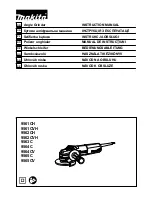
Optional Equipment
Emergency Floats
ROTORCRAFT FLIGHT MANUAL
MD 500
(Models 369HE/HS/HM
)
CSP-HE/HS-1
Revision 6
9-26
FAA Approved
PART III
EMERGENCY AND MALFUNCTION PROCEDURES
Emergency Float Operation:
If emergency occurs at airspeeds greater than maximum permissible float
inflation speed, i.e., 80 knots IAS, reduce speed to 80 knots or less prior to
float inflation. Do not exceed airspeed limits.
NOTE
:
Inflations have been demonstrated up to 100 knots IAS in autorotation.
Float Inflation:
Check float circuit breaker
IN
.
Actuate guarded float inflation switch on cyclic stick grip.
NOTE
:
Only momentary switch actuation is required.
Float inflation time and altitude required for deployment are presented
below. Deployment altitude is based on a stabilized autorotational rate of
descent of 1800 feet per minute. It was calculated using the tabulated
float inflation time and a two second increment for pilot reaction time:
Inflation should be accomplished in autorotation at 2,000 feet or less
above landing surface to minimize differential pressure change with alti−
tude change.
For over−water operation in the crossed hatch area of the Height Veloc−
ity Diagram, immediate pilot reaction will be required to ensure float
inflation prior to water contact.
Make a normal landing approach. Minimize forward speed prior to water
contact. Recommended water contact speed 10 knots or less. Do not low−
er collective until forward speed is 5 knots or less. Landings have been
demonstrated at gross weights up to 2,550 pounds and touchdown speeds
up to approximately 15 to 20 knots.
Emergency Floats (369H90121−505) on extended landing gear:
Make a normal landing approach. Minimize forward speed prior to water
contact. Recommended water contact speed 5, knots or less. Landings
have been demonstrated at gross weights up to 2,000 pounds and touch−
down speeds up to approximately 10 knots.
NOTE
:
Landings should be made with the helicopter as level as possible laterally and
the nose of the helicopter slightly high. One-float-first landings may produce
undesirable but controllable yaw.
Solenoid Installation. After landing, open the emergency float circuit
breaker to prolong the life of the solenoid.
If emergency occurs at night over water, the dual landing lights should
not be illuminated above 1000 feet in order to preserve battery power.
Approach and landing as noted above.
















































